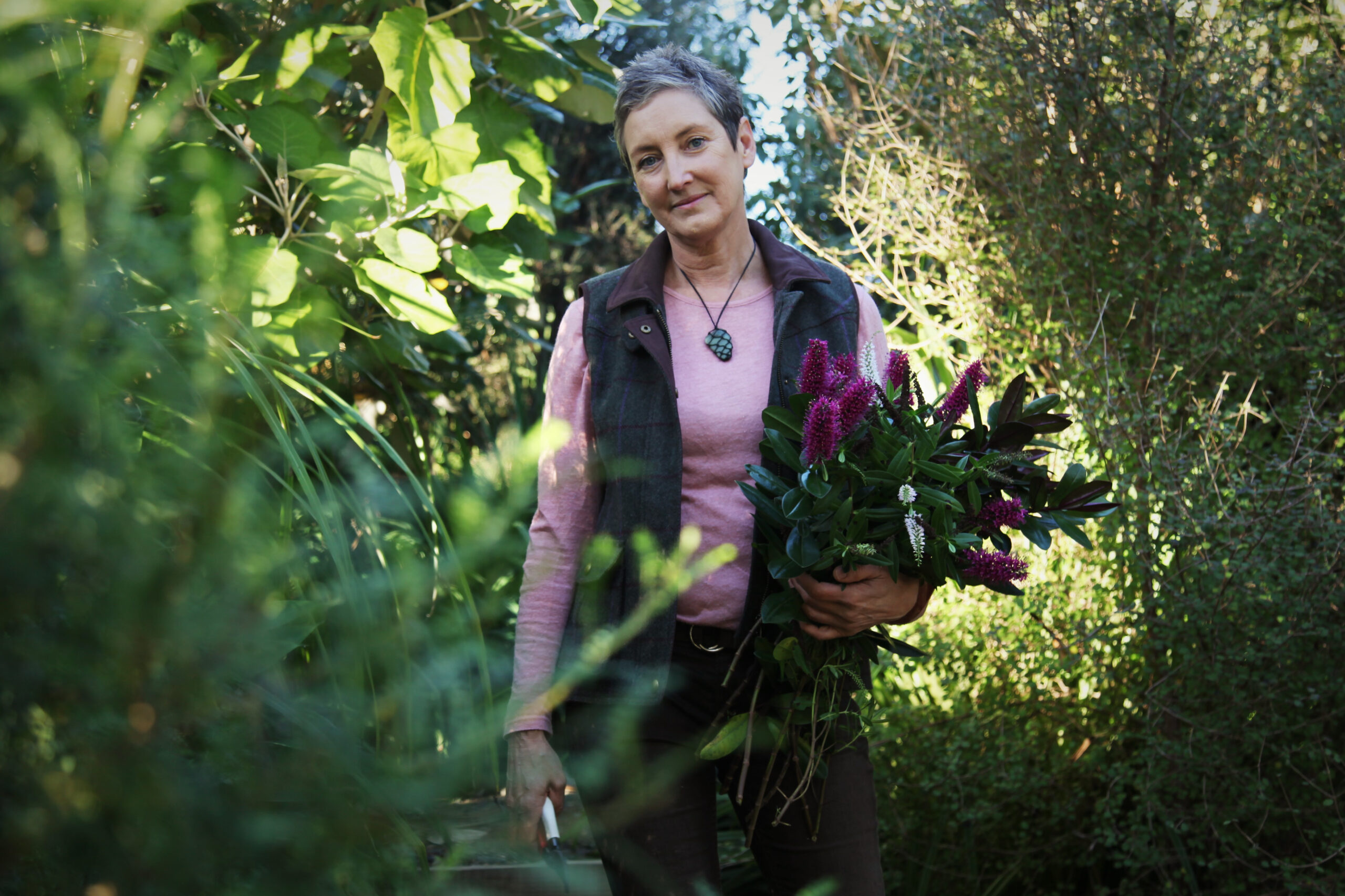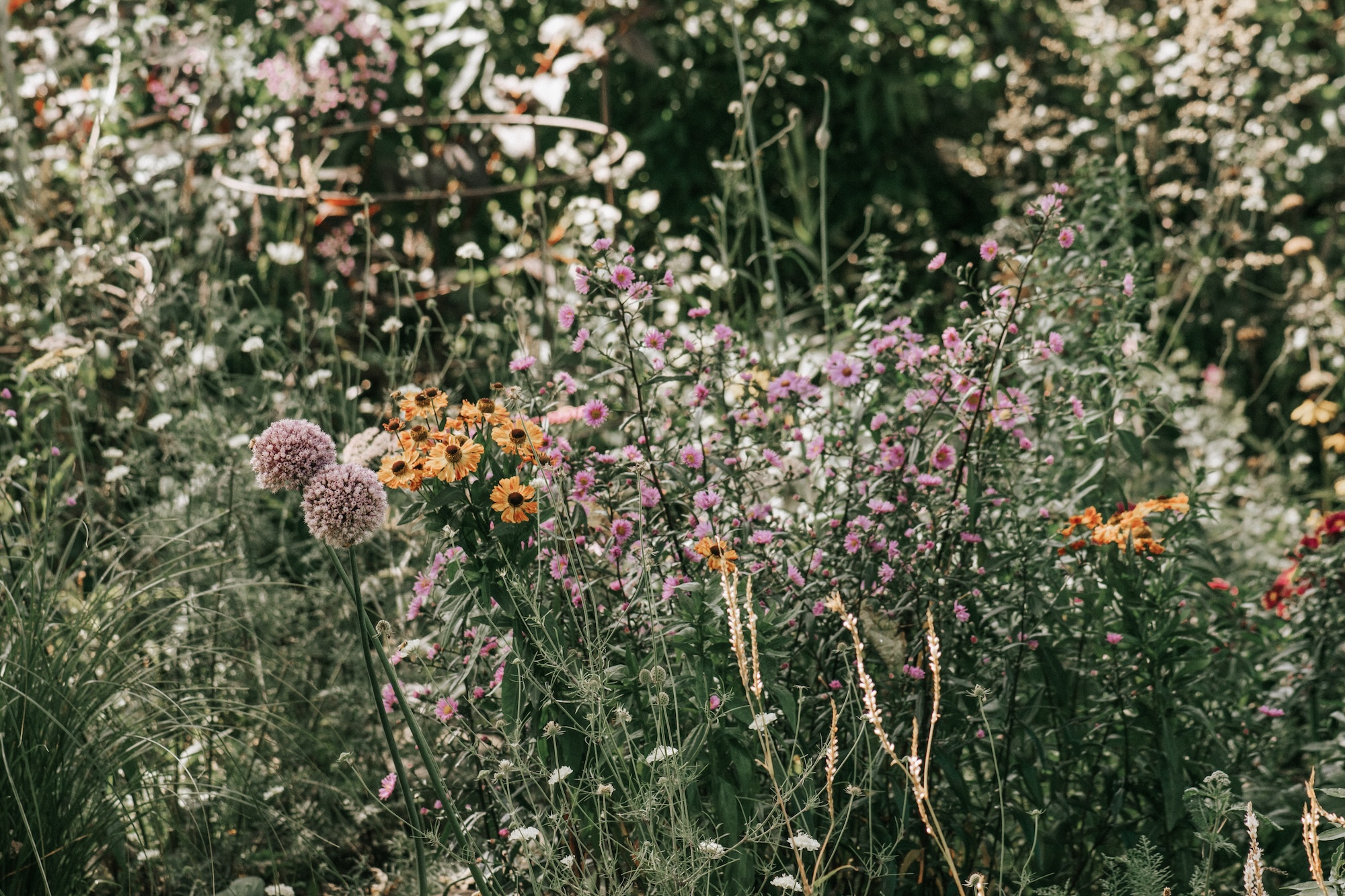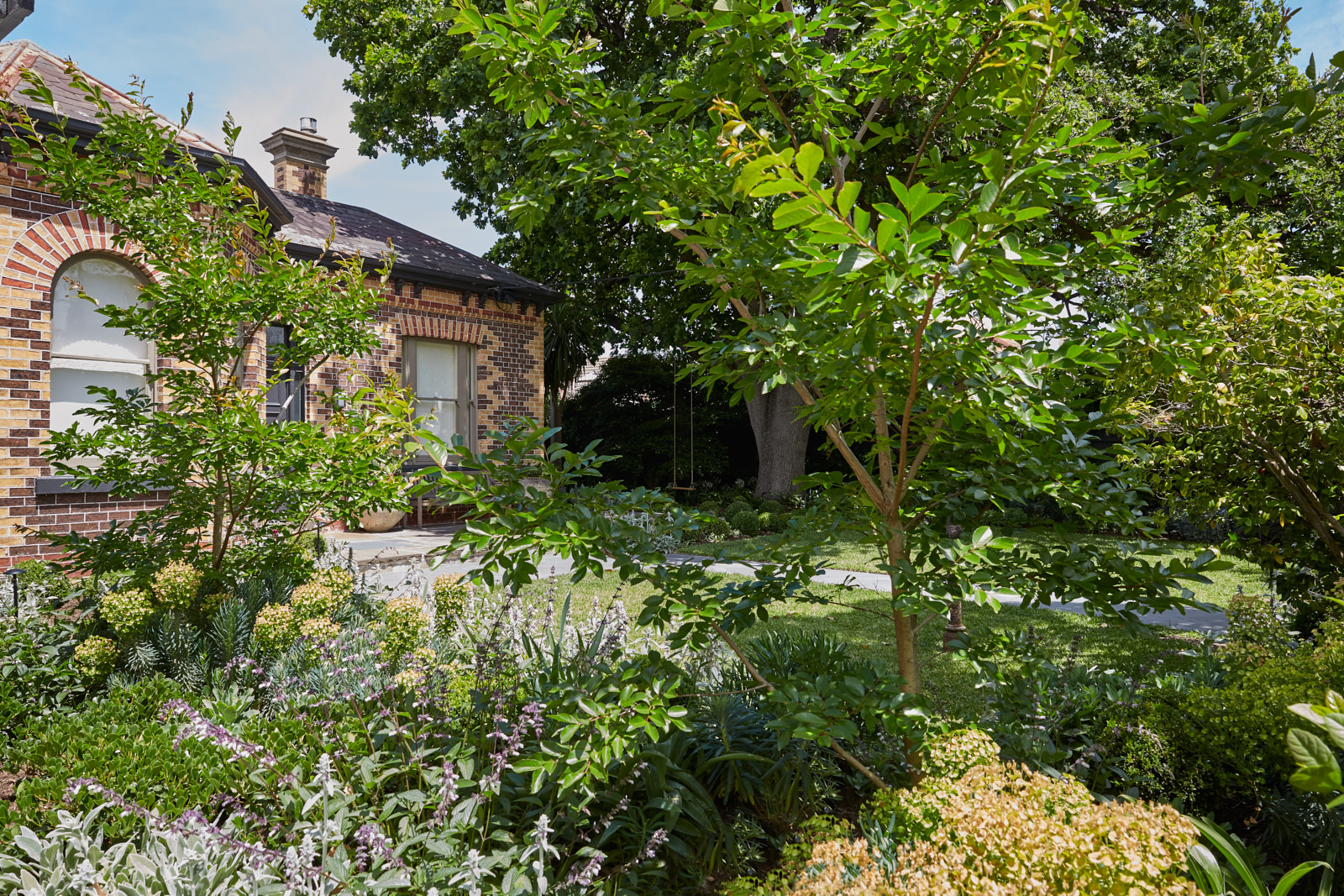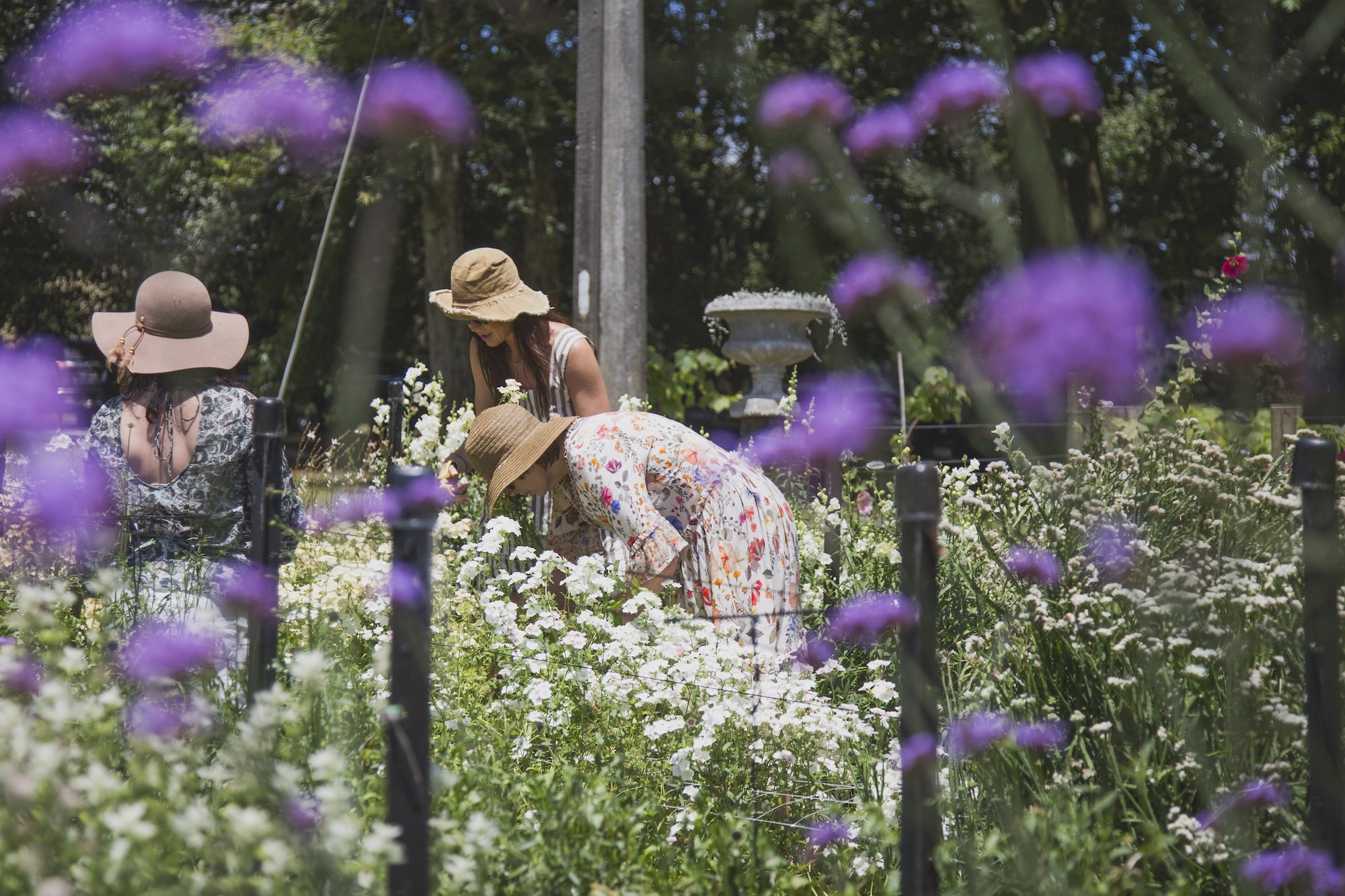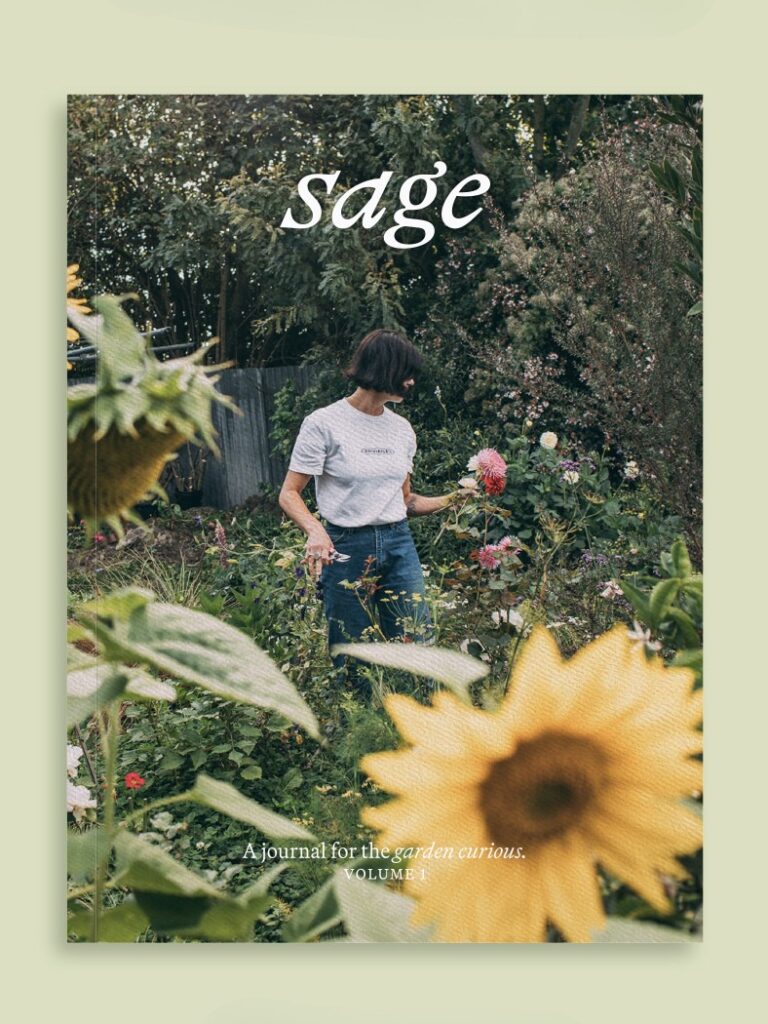Jane Mahoney shares the story behind Kaikōmako — her ten-year garden project in Corsair Bay, Canterbury, and the beginnings of Secret Gardens.
When Jane Mahoney and her partner Jo first stepped onto the steep, overgrown property in Corsair Bay, it took more than a little imagination to see the potential buried beneath the brambles and weeds. But over the past decade, they’ve transformed that unruly hillside into Kaikōmako: a layered garden shaped by native planting, ecological restoration and a deepening relationship with the land they call home.
In this personal essay, Jane reflects on the challenges and rewards of working with such a difficult site, and how a lifelong love of gardening evolved into Secret Gardens: a national garden-share platform that celebrates the knowledge and generosity of home gardeners across Aotearoa.
What began with a chipper, a list of native plants and a vision for habitat restoration has become a long-term project of learning, labour, and the simple joy of sharing a garden with others.
Now, for the first time, Kaikōmako will open to visitors — a garden ten years in the making, still evolving and full of stories to tell.
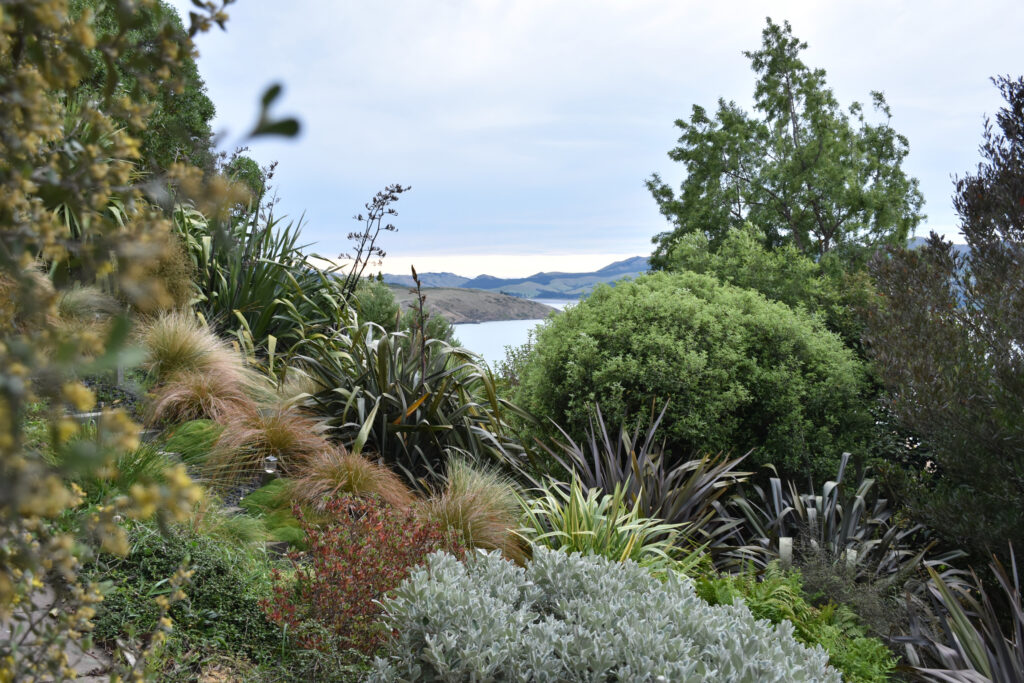
Words by Jane Mahoney
August 2025 marks ten years since my partner Jo and I bought our home in Corsair Bay, in the crater of an ancient, extinct volcano that forms Whakaraupo, Lyttelton Harbour.
It would be an understatement to say that the property failed to impress my sensible and pragmatic Jo on first viewing — a 1980s house with sun-warped timber exterior, on an acre of steep, inaccessible, heavy clay, unkempt ‘garden’. I use the word garden tentatively here, given that a garden, by definition, involves “a degree of control over the environment and plant selection”.
My enduring memory of that first Open Home is of the where-do-you-start and exhausted-by-the-thought-of-it looks on people’s faces, as the more intrepid amongst them attempted an exploration of ‘the garden’, with varying degrees of successs. If you were careful, you could make your way up a steep, precarious path, through overgrown weed-trees and brambles, to an even steeper area of overgrown weed-trees and brambles.
To their credit, the couple who originally built the house had planted about half the section in native trees but clearly not a lot of attention had been paid to the garden since, at least not in the past 15 years — think blackberry, convolvulus, thorny plum, and the all-smothering, invasive Muehlenbeckia…
For me it was love at first sight “So much potential!”. “Creepy.” said Jo “Get me out of here.”

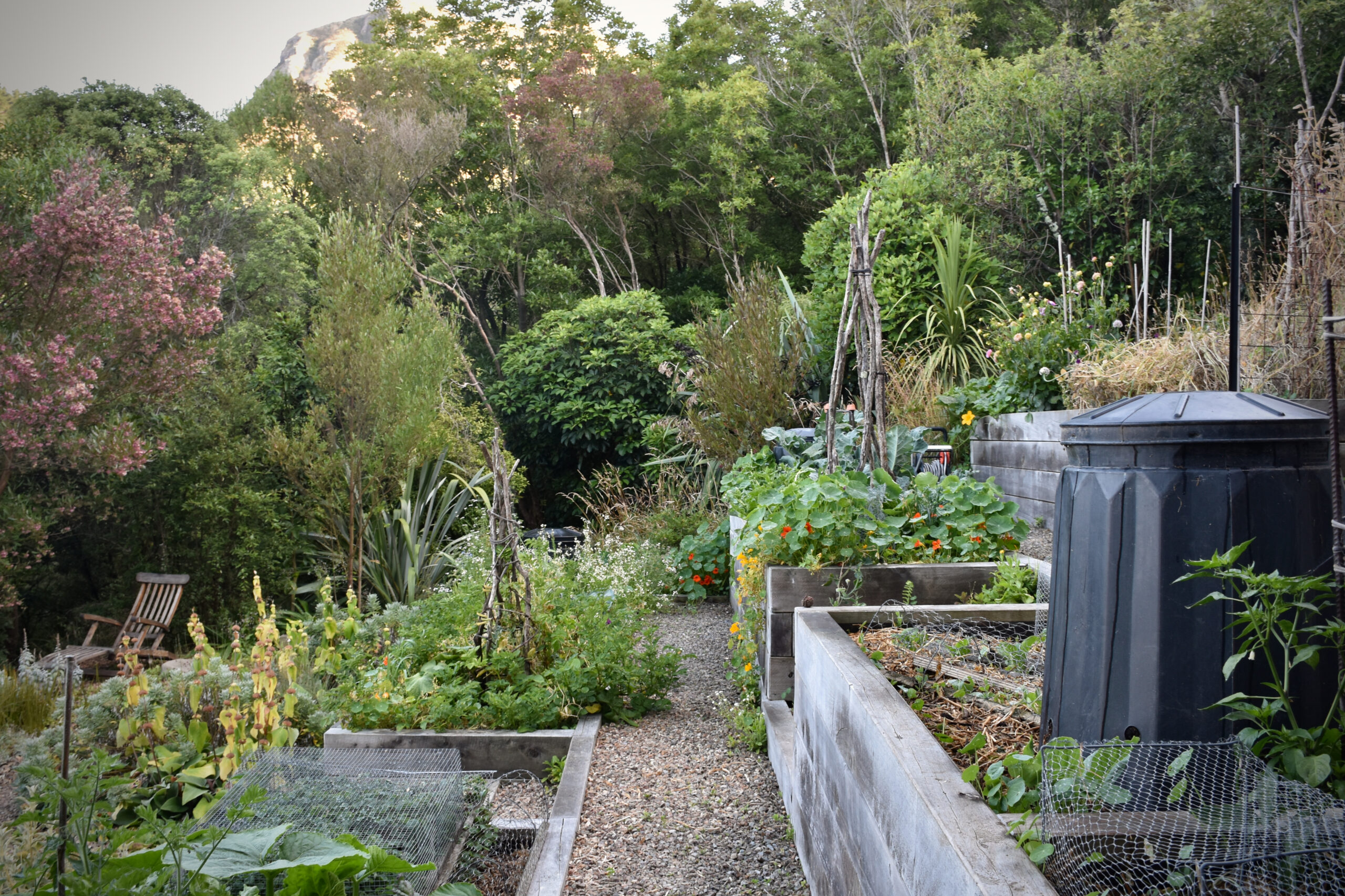
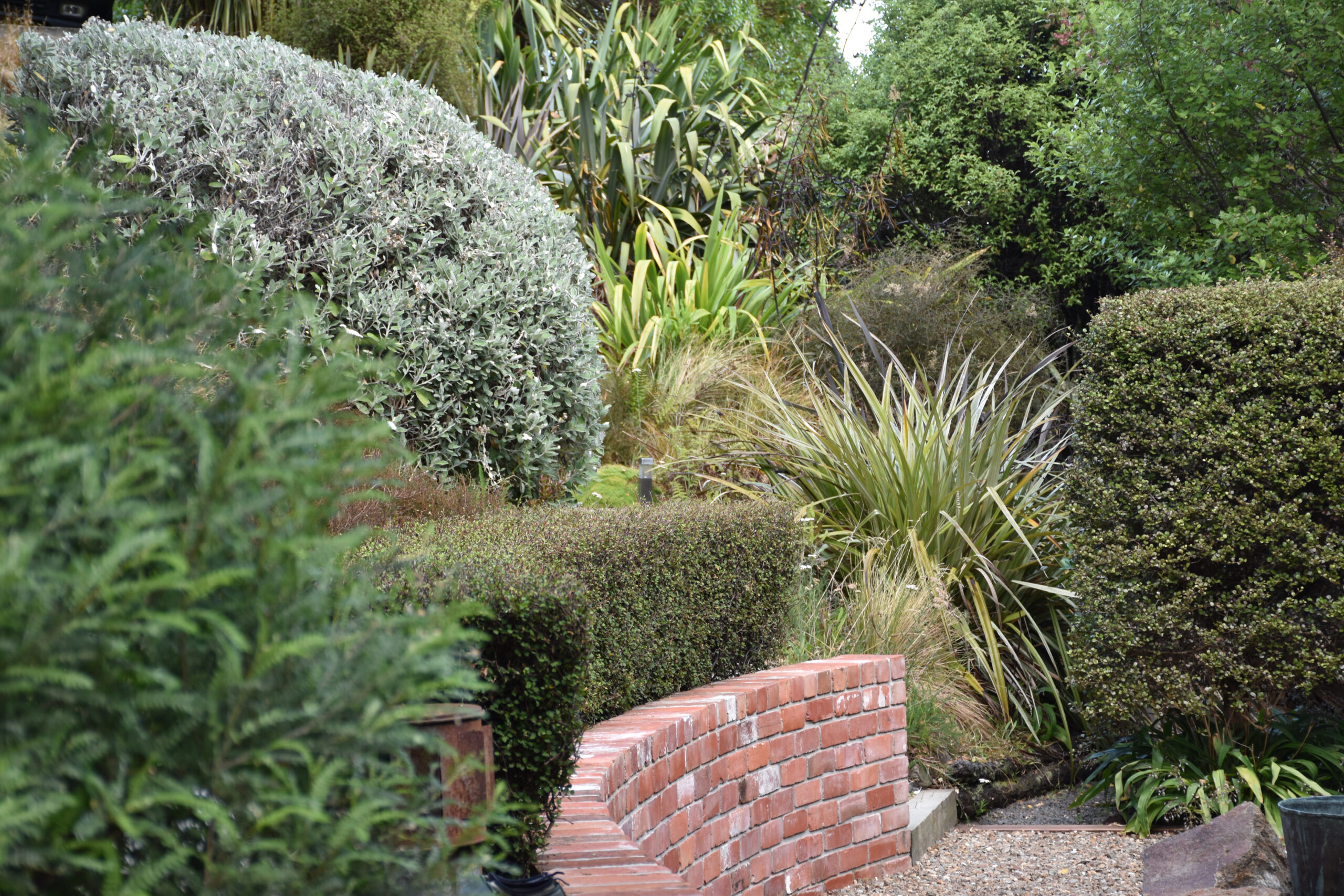
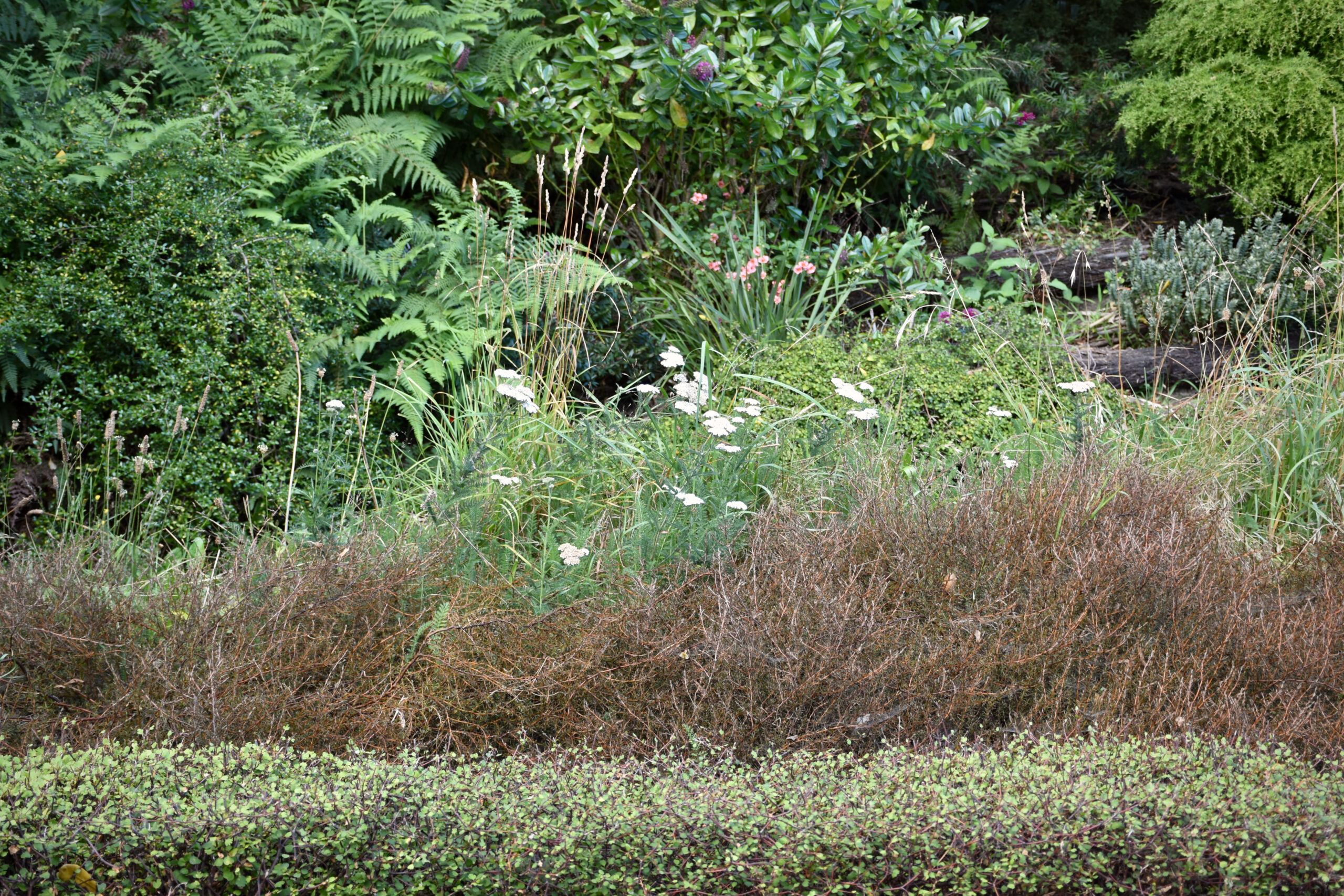
The Māori name for Corsair Bay is Motu-kauati-iti — little fire-making tree grove — in reference to the abundance of treasured kaikōmako trees (Pennantia corymbosa) that once grew here. A prized food-source for the bellbird (kōmako or mako mako), early Māori used its hard wood for making fire — by rubbing a pointed stick of kaikōmako rapidly in a grooved piece of soft mahoe wood, one can heat the mahoe to ignition point. Long-since cleared for farming, then built on over time, there’s little evidence of the lush native bush that would have once cloaked the valley but by some small miracle, bellbirds have remained.
Jo and I didn’t attend the auction. It was passed in and sat on the market for another couple of months. I’d like to be able to claim that she was swayed by my ‘vision’ for the property, but I suspect it was the haunting song of the bellbirds that won Jo over in the end. That first winter we bought a 6.5 horsepower chipper, and I planted a kaikōmako tree next to the letterbox.
Since day one, our focus for the garden has been to restore a habitat for the flora and fauna that belong here. It has been, and continues to be, a steep learning curve. Looking back, I’m embarrassed that I had reached the age of 50 with so little knowledge of Aotearoa’s native trees and plants. I’m still far from an expert, and am pretty hopeless at retaining botanical names, but with research and close observation I’ve slowly become more ‘tuned in’ to which trees and plants are at home here, and the resources they provide for our native birds, lizards and insects.
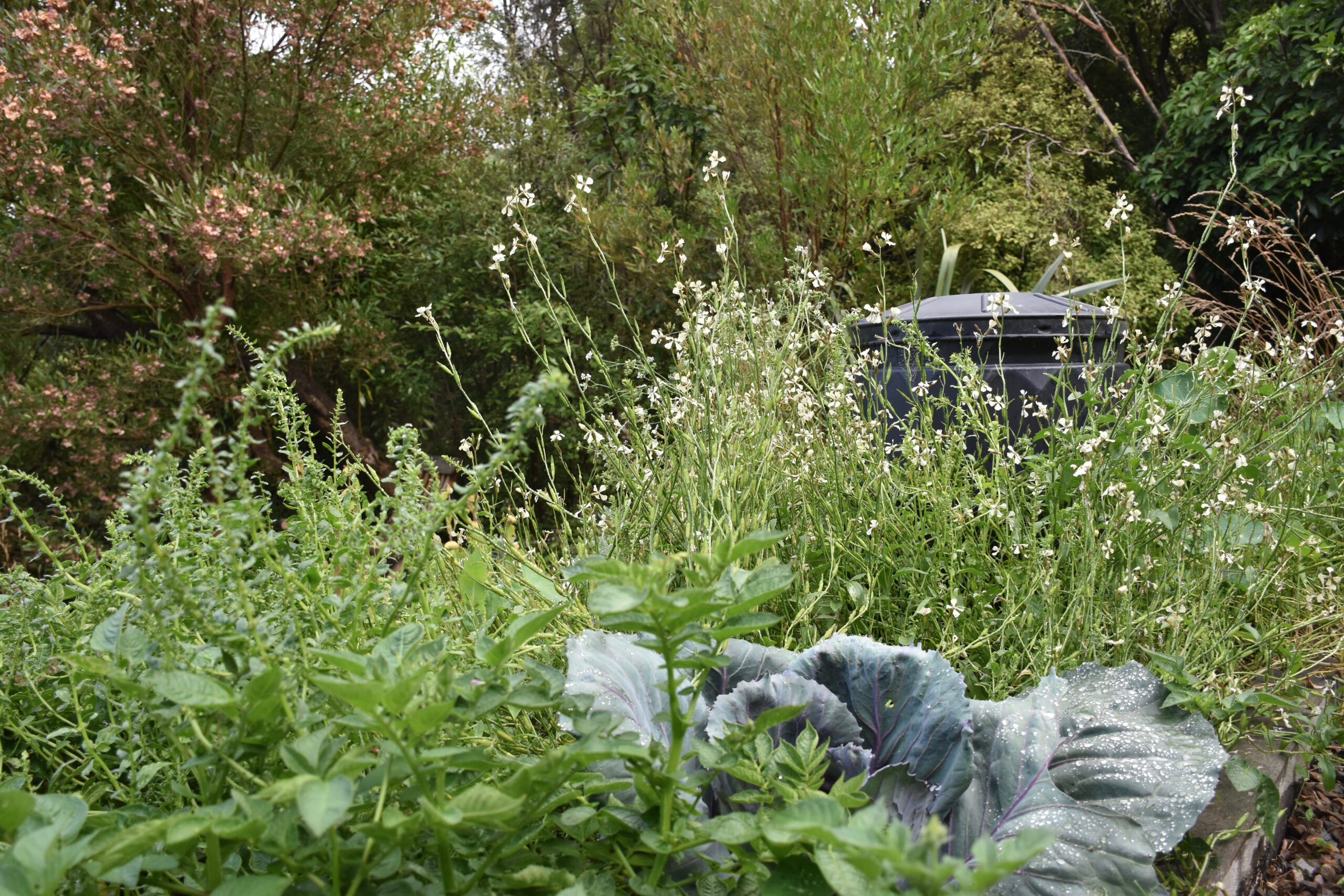
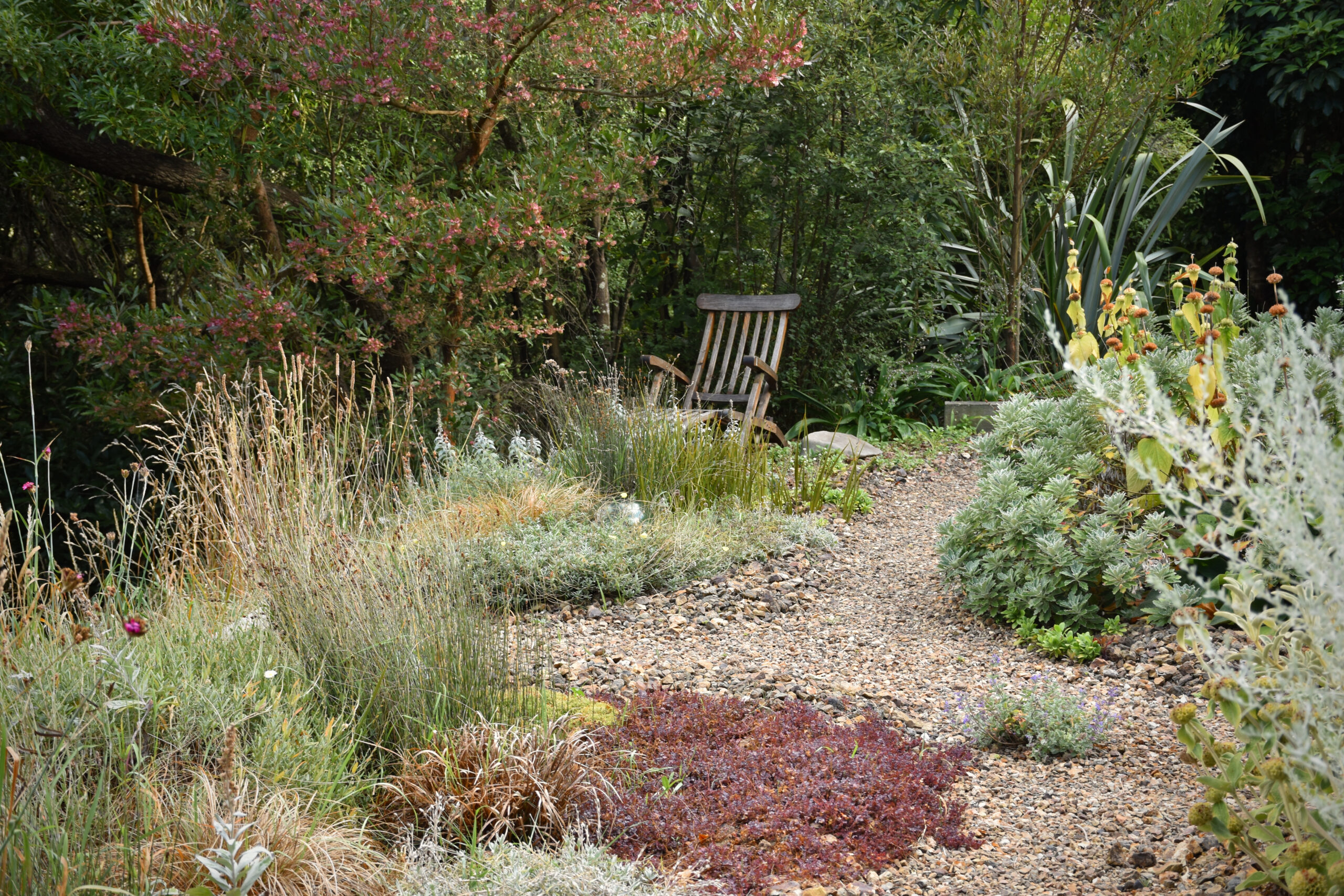
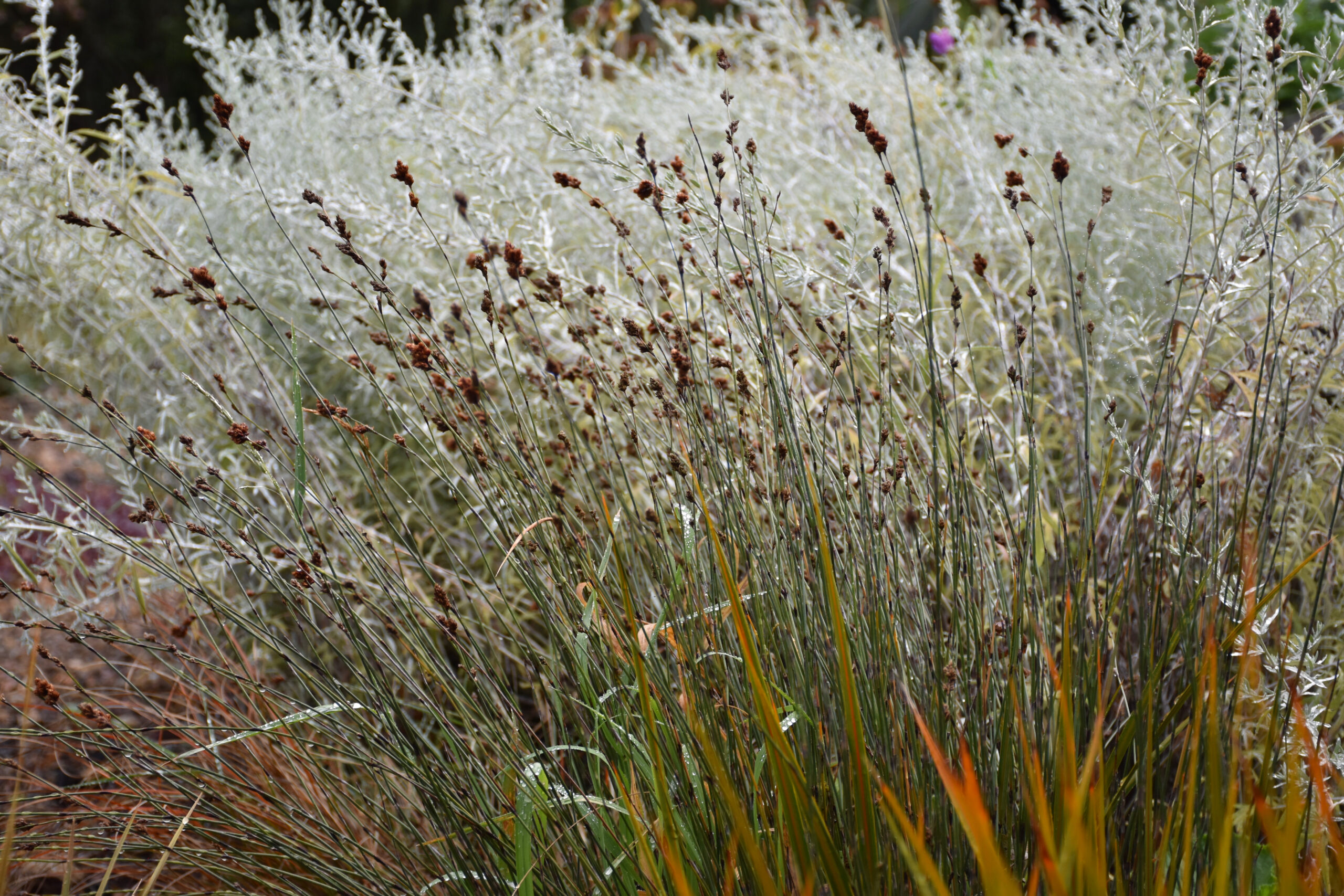
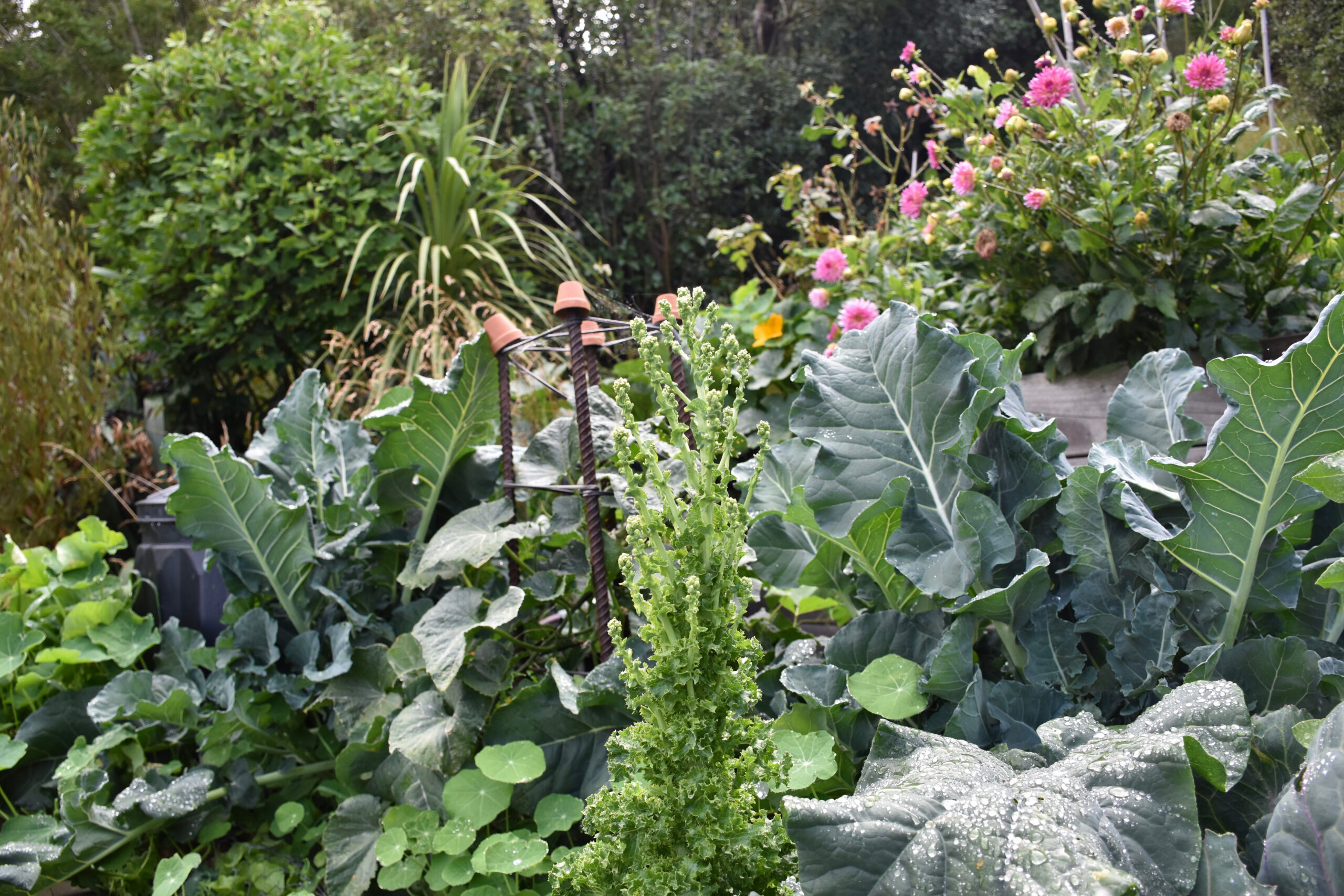
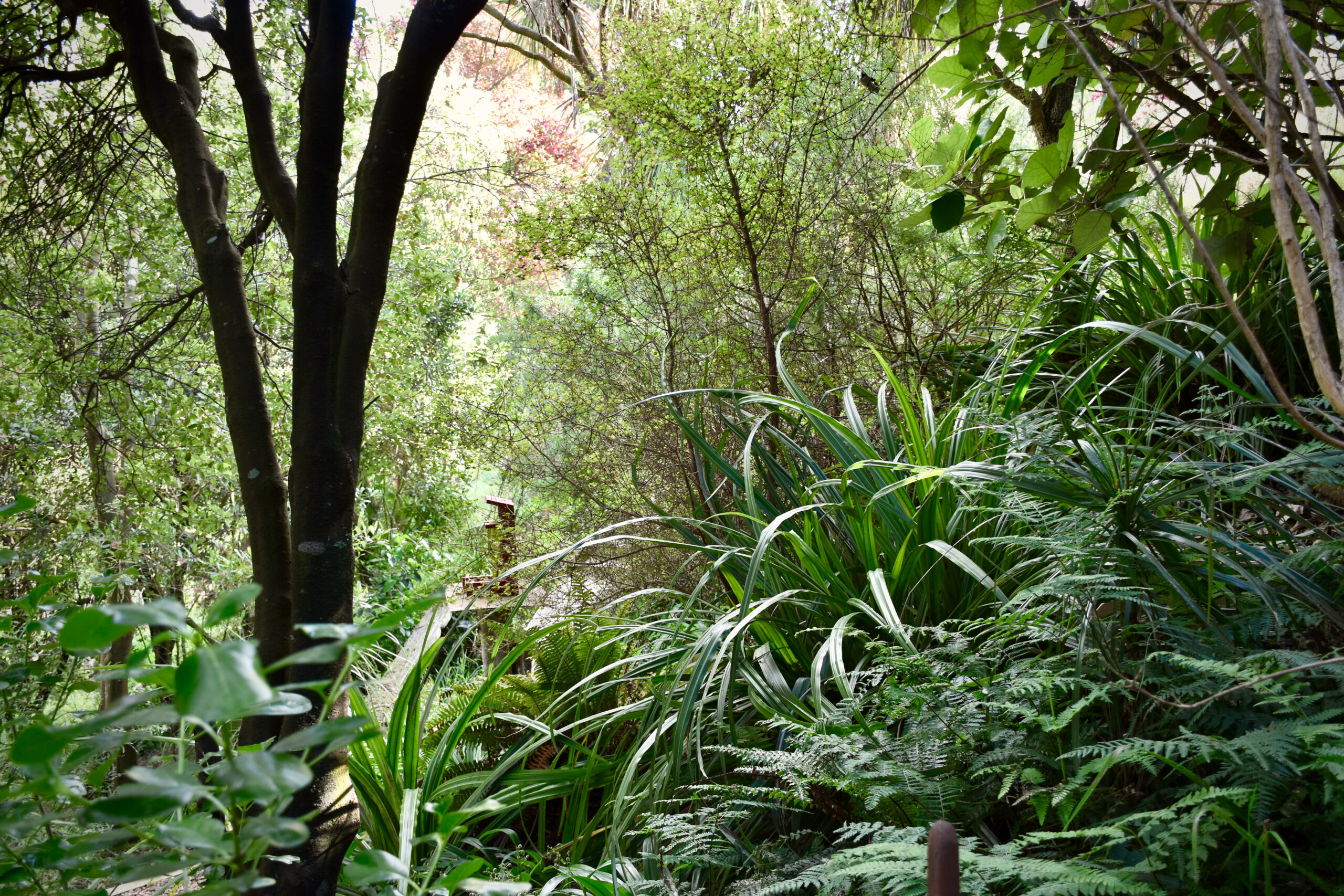
Soon after that first Open Home, a Google search turned up a DOC list of all plants natural to Lyttelton Harbour — gold! Few of the names were familiar to me, so I worked through the list, found images of each plant and compiled them into Pinterest folders for easy reference. I took the list to our local, eco-sourced, native nursery Trees for Canterbury, asked lots of questions, picked up old reference books in second-hand stores, and went for lunchtime walks in the New Zealand section of our local botanic gardens — taking photographs and taking notice.
As soon as our boxes were unpacked, work began in the garden, with the help of brother-in-law Graeme and his trusty chainsaw (and said chipper, my newest best friend). Clearing an area for the permaculture orchard took priority — we planted 23 fruit trees in that first year.
Apart from the orchard and vegetable garden, all the planting we’ve done has been native, and mostly from that original natural-to-the-harbour plant list.
There’s been a considerable investment in hard landscaping — carried out by an expert, in stages, as funds permit. Steps for safe access, a terraced vegetable garden, terraced areas for seating and retained areas within the garden, to stop the precious woodchip mulch from being washed down the hill.
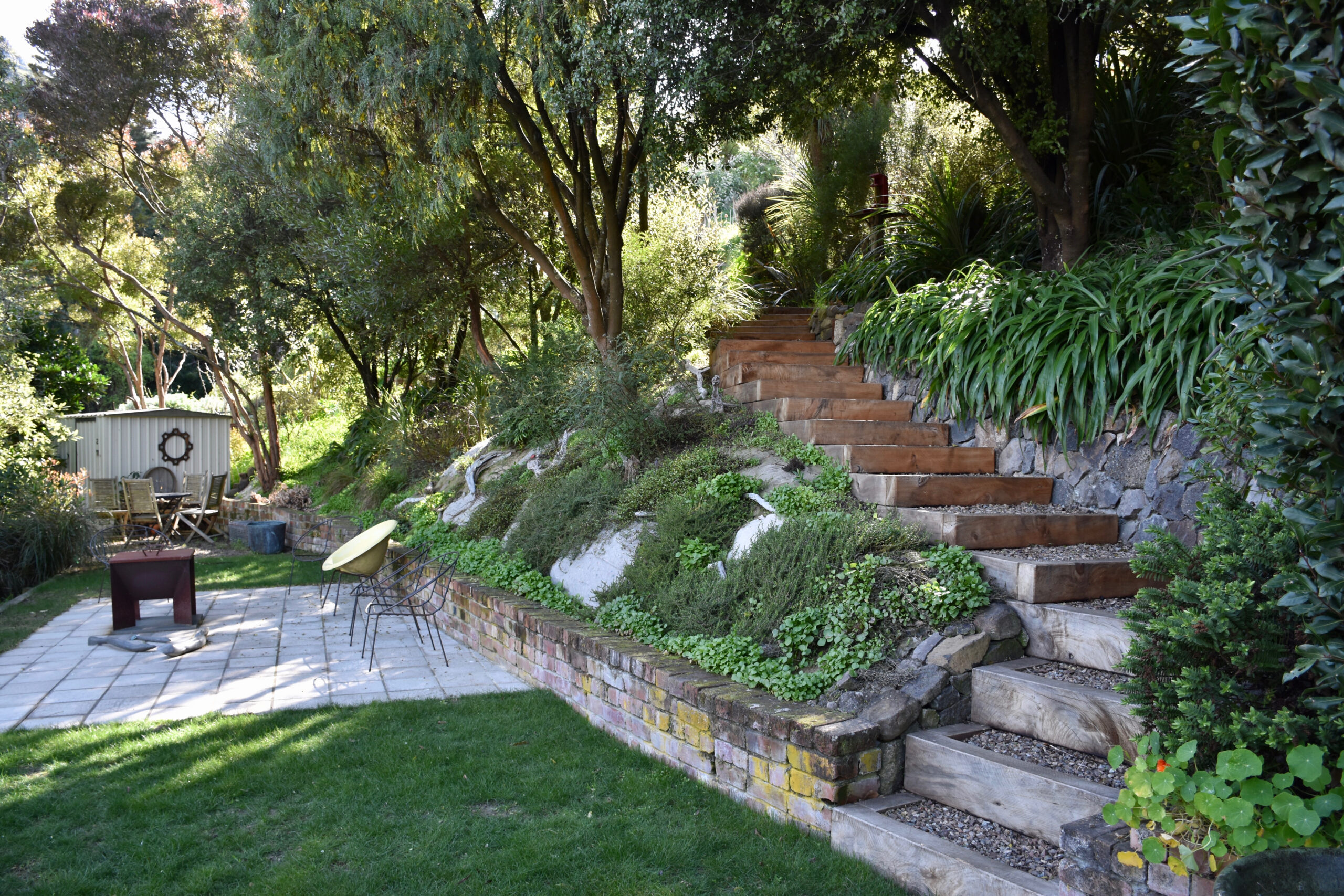
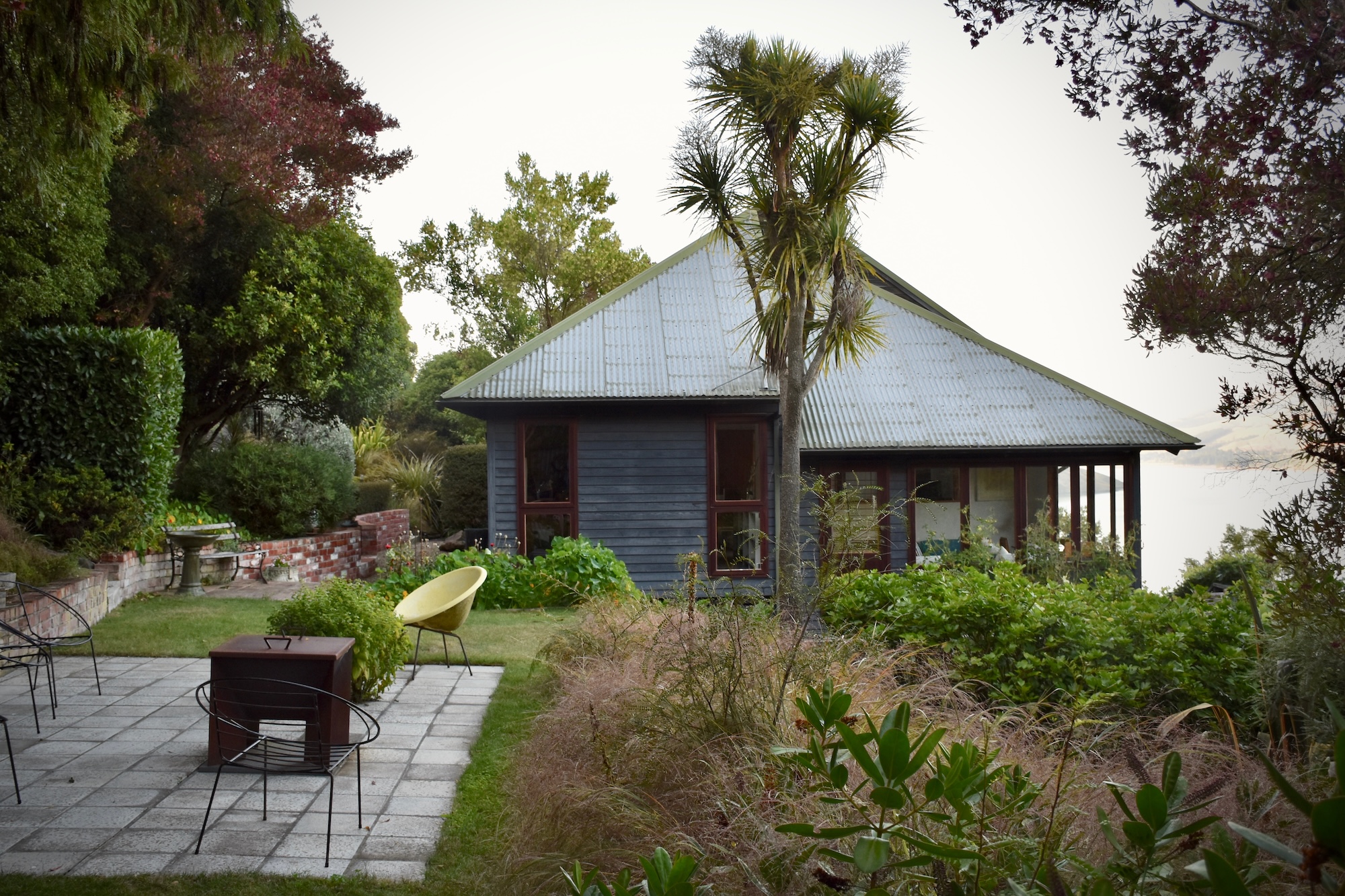

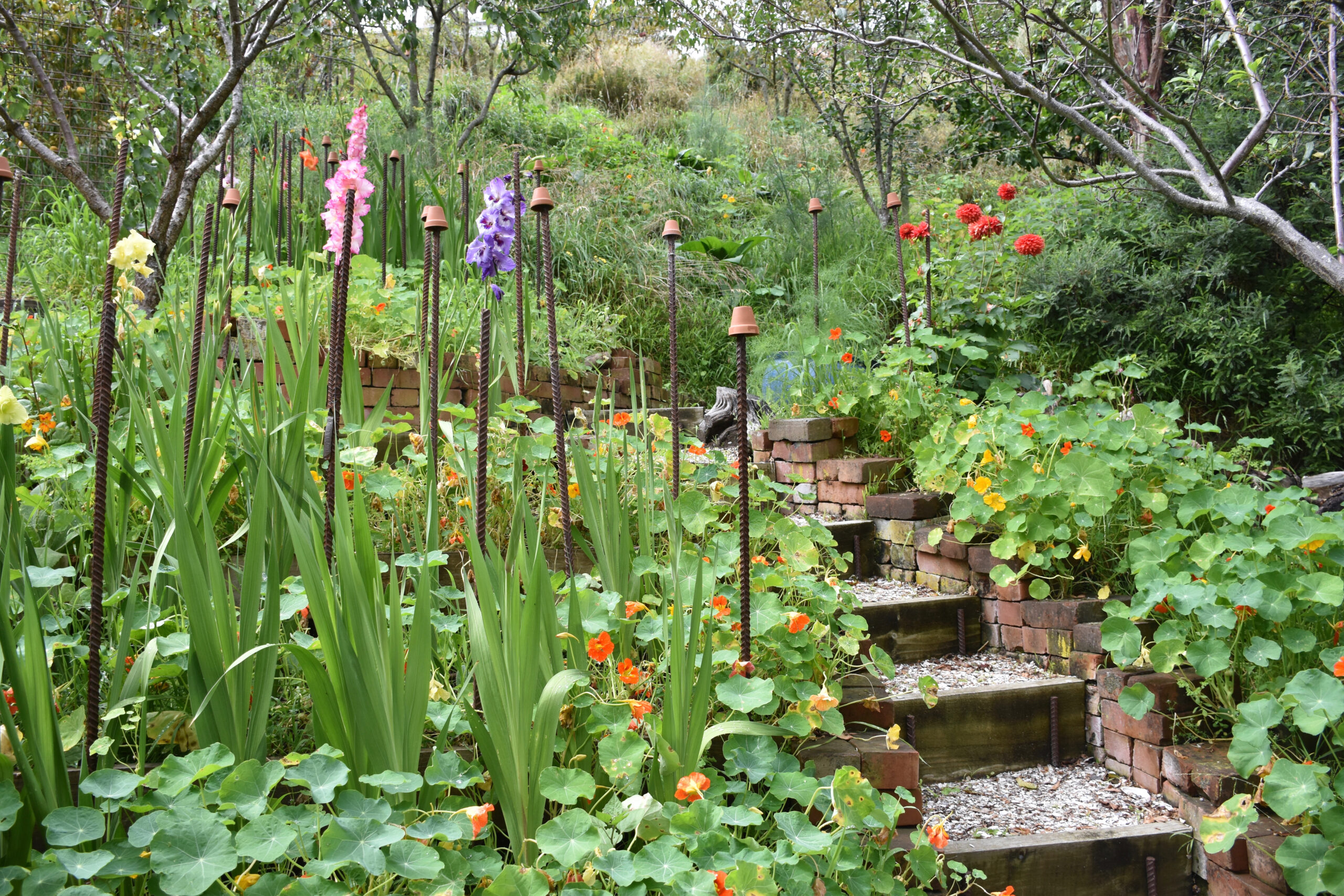
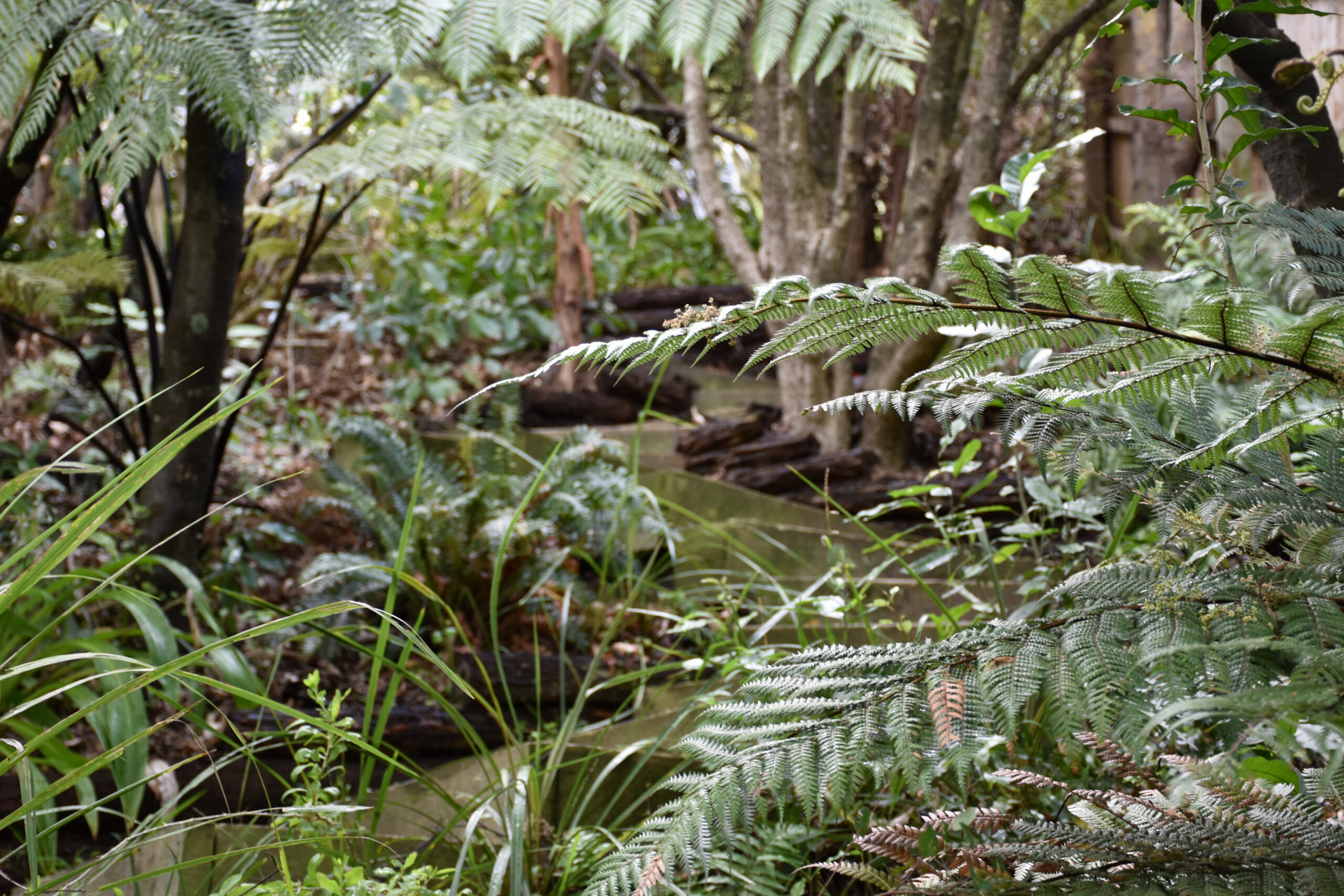
It has been a hugely satisfying project. Visitors comment, “So much work!”, but for me it’s all play. I love researching and learning, heading down rabbit holes of local history and natural history. I enjoy the planning, imagining and designing, the satisfaction from a day of hard physical work and the amazing sense of achievement, especially when looking back at ‘progress’ photographs.

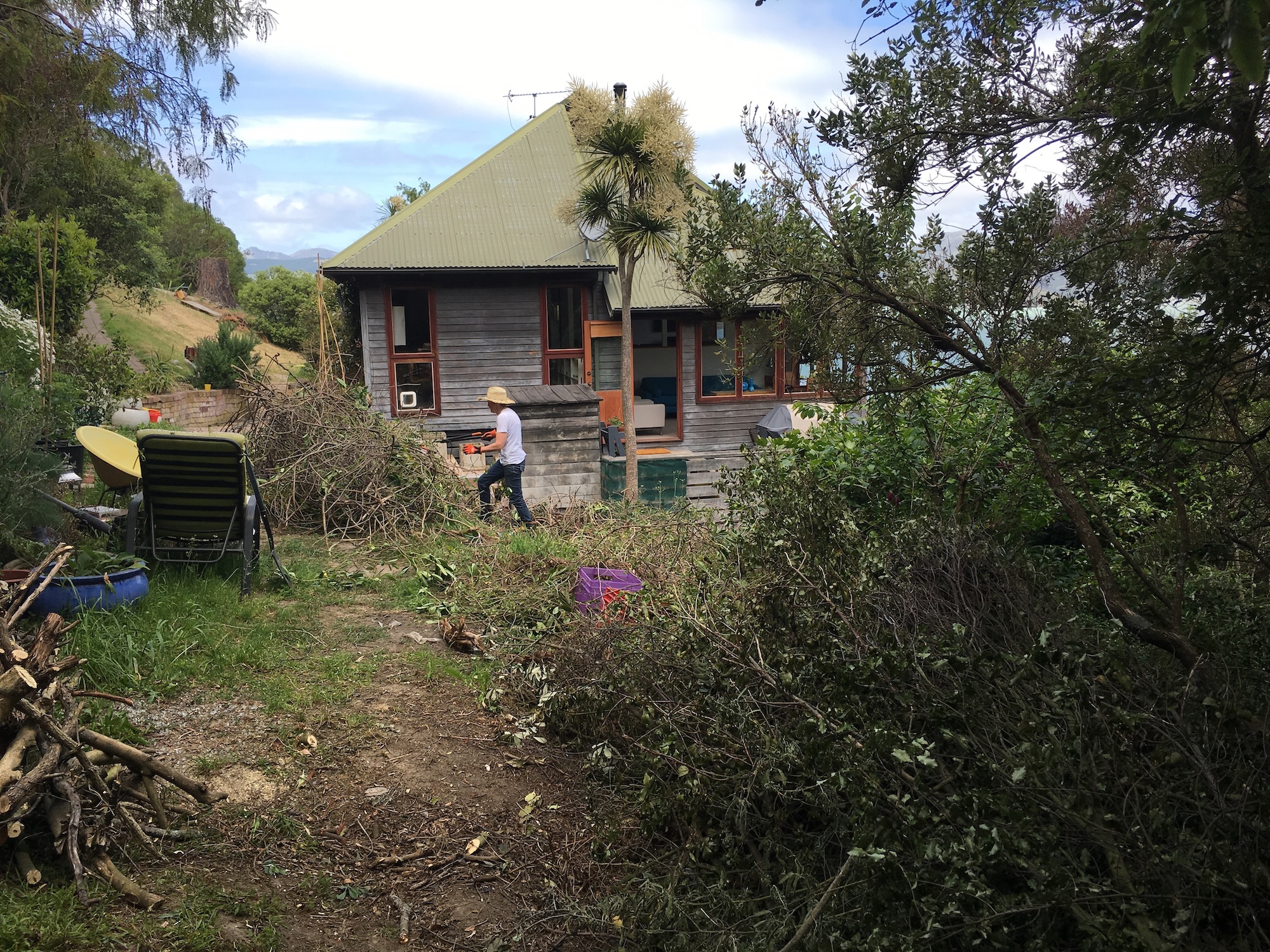
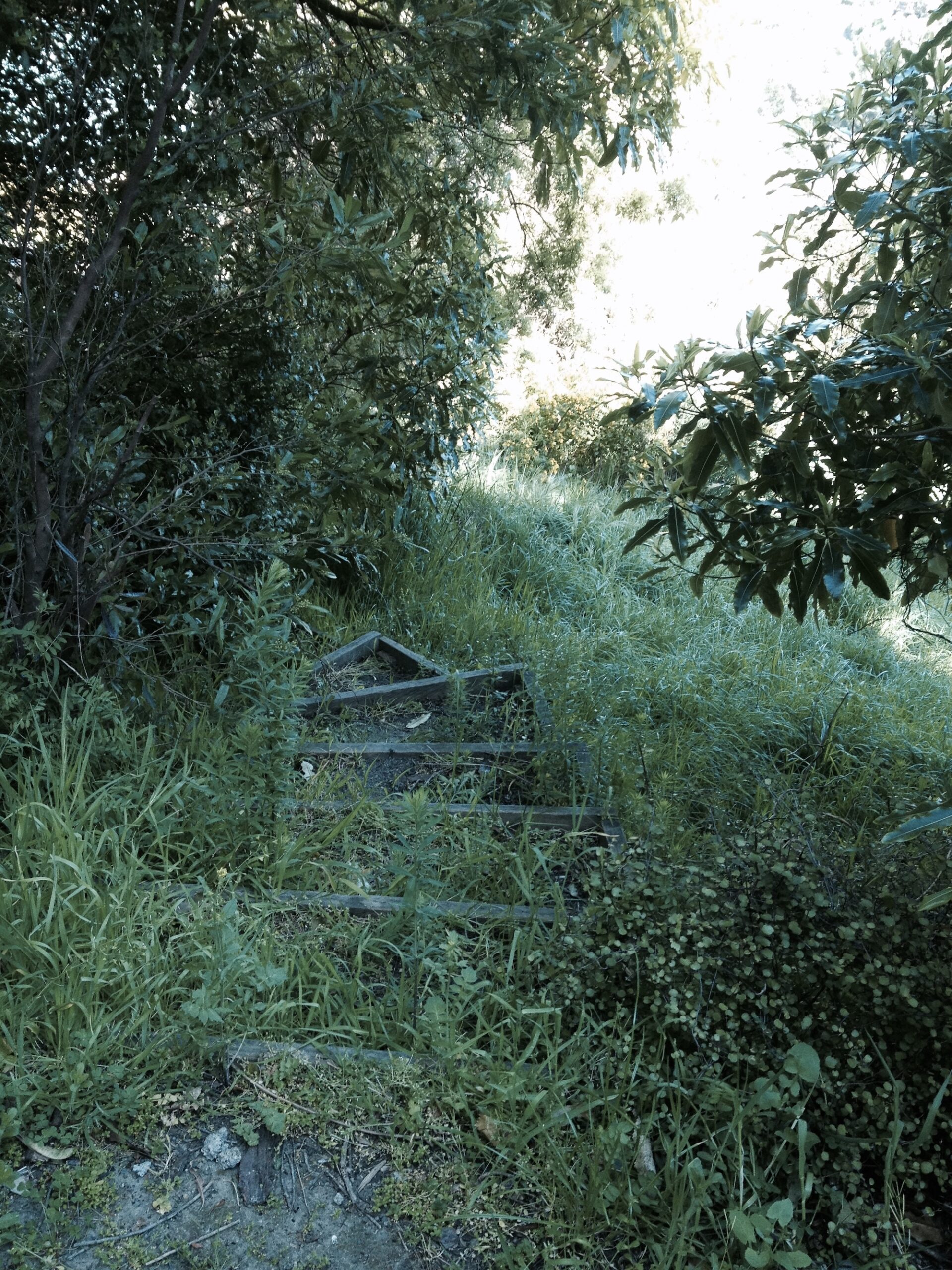
Whilst developing our garden over that time, threads of an idea started to form that eventually developed into a new business. As I gained more knowledge about native plants, and new practical skills, I started to envisage the huge pool of knowledge that gardeners collectively possess, acquired over lifetimes. I imagined all this knowledge, for the most part hidden away behind closed doors, or garden gates. How can a new generation of curious gardeners tap into this knowledge pool? How can we connect with other gardeners in our area, to see what’s working for them and what’s not working — in a way that didn’t involve meeting in a church hall on the last Tuesday of every month.
I’ve learnt so much over the years from looking around other people’s gardens, asking questions, discovering new plant names, tips, remedies. Wouldn’t it be satisfying to be able to share our own garden, and achievements, with people who ‘get it’.
Three years on, Secret Gardens is an online garden-share platform that enables passionate gardeners to share their garden and their knowledge by offering tours and/or workshops in their own garden. We’re gradually building up a curated collection of inspiring gardens to visit, throughout Aotearoa. Secret Gardens are not your typical, perfect, ‘show gardens’, rather our focus is on productive, sustainable and beautiful ‘real’ gardens, created and maintained by talented and resourceful ‘home gardeners’.
Within a couple of weeks of launching the Secret Gardens website, it attracted the attention of a publisher and gave rise to the book, that I co-authored with my daughter Sophie Bannan — Secret Gardens of Aotearoa: Field Notes and Practical Wisdom.
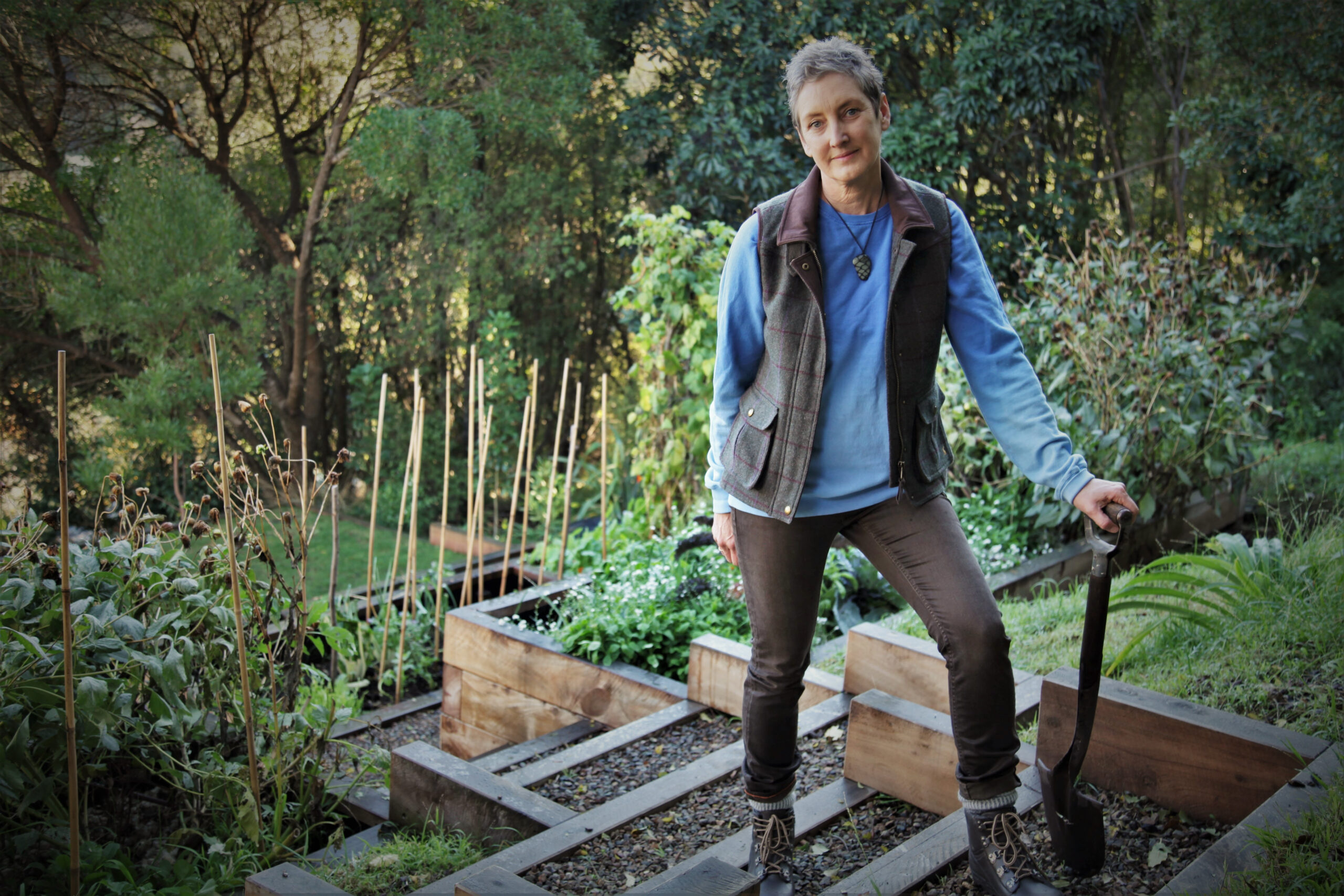
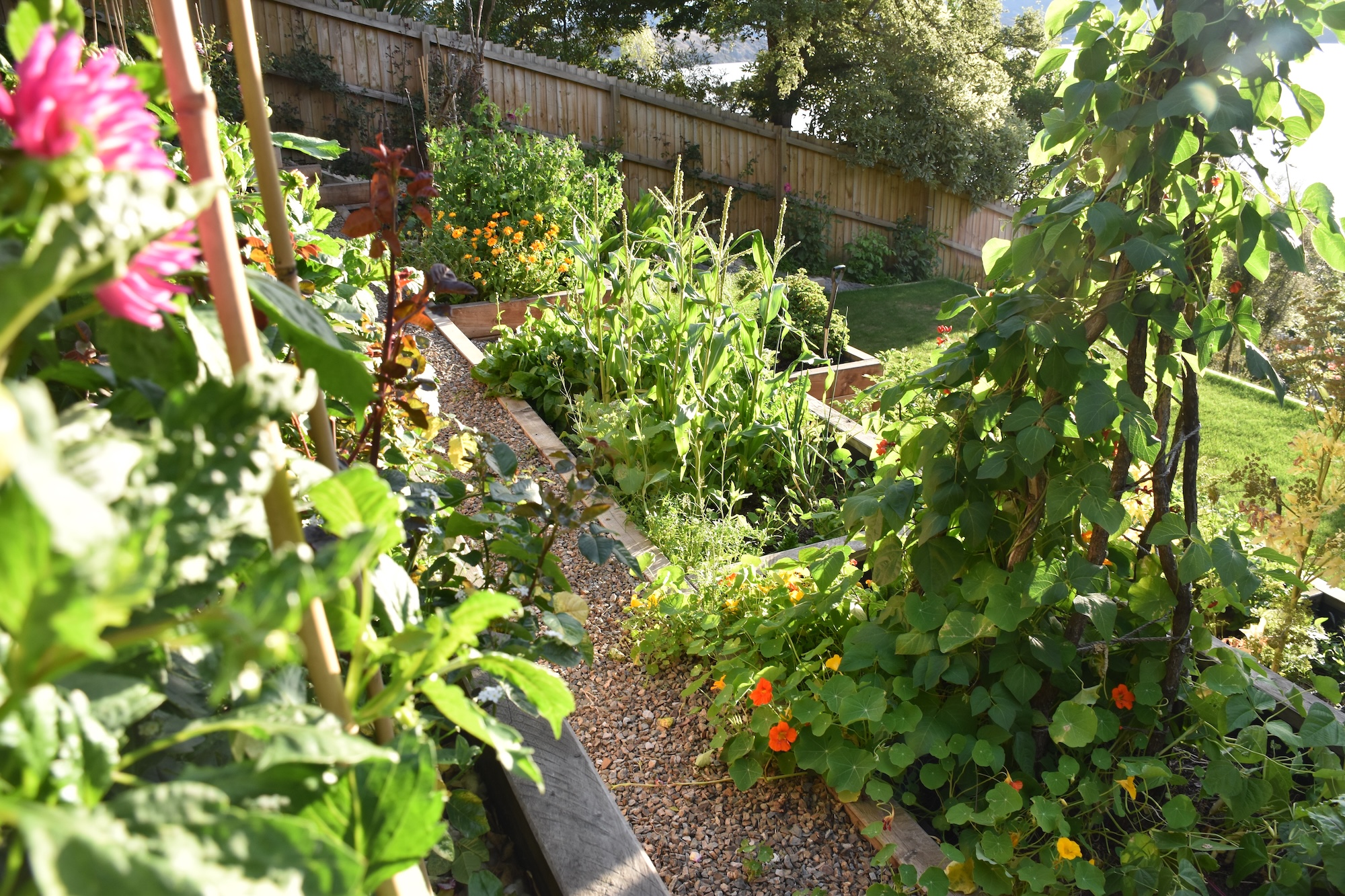
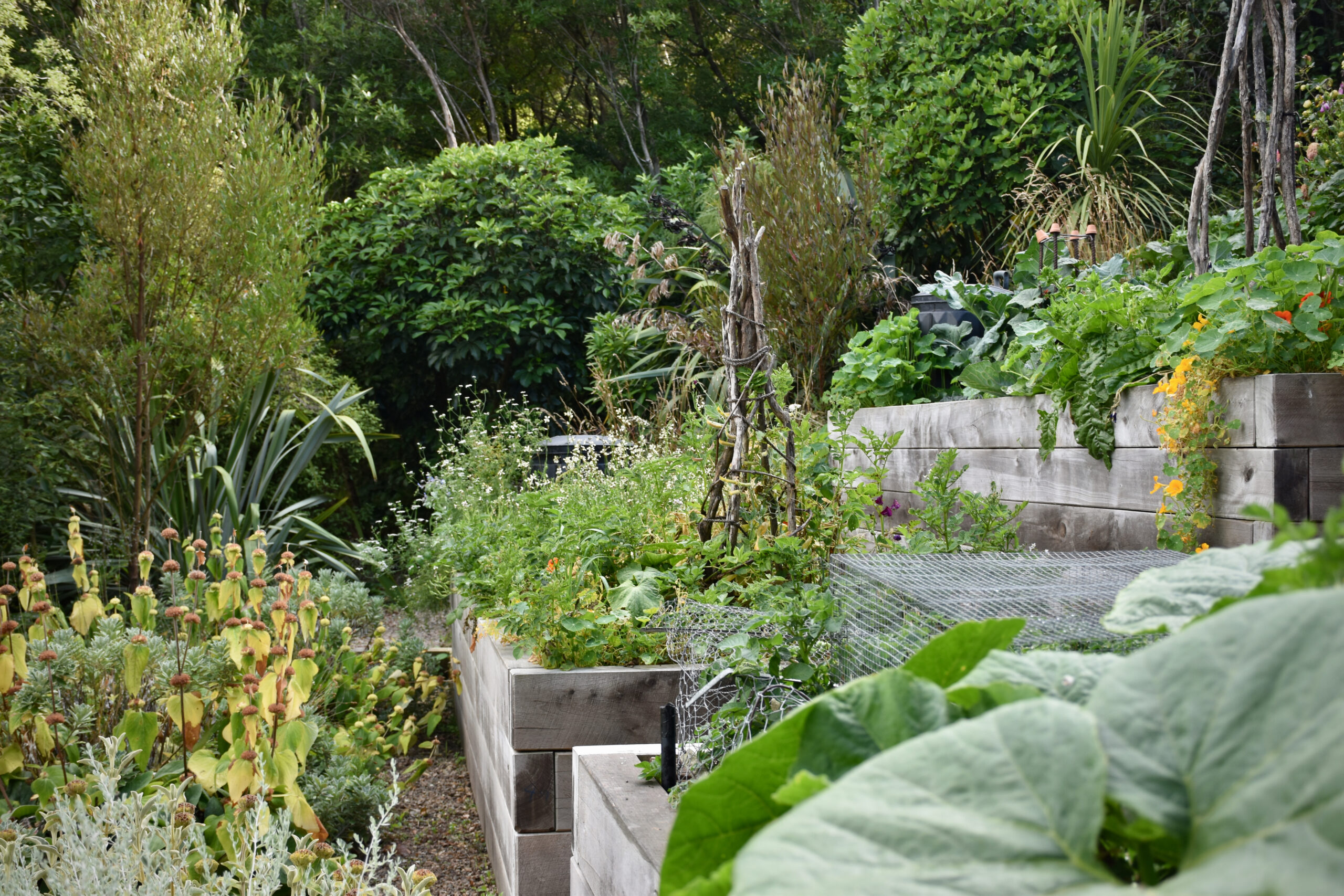
In business, you learn about identifying and focussing efforts on your ‘circle of influence’ — applying your energy where you can make a difference, not wasting it on that which is outside your control. In this increasingly crazy world, I know I can make a tangible difference in my garden — creating habitats, increasing native biodiversity, playing my part in pest control, reducing food miles, building soil, and creating beautiful spaces to live our lives in.
This year, Jo and I are finally ‘walking the walk’ and have listed our garden — Kaikōmako — on the Secret Gardens website. We’ll be open to visitors a couple of times a month, throughout the year. Our garden is not perfect, nor even ‘finished’, but I hope that through sharing some of our learnings from the past ten years, our successes and failures, that we might in some small way extend our ‘circle of influence’ beyond our own garden gate.

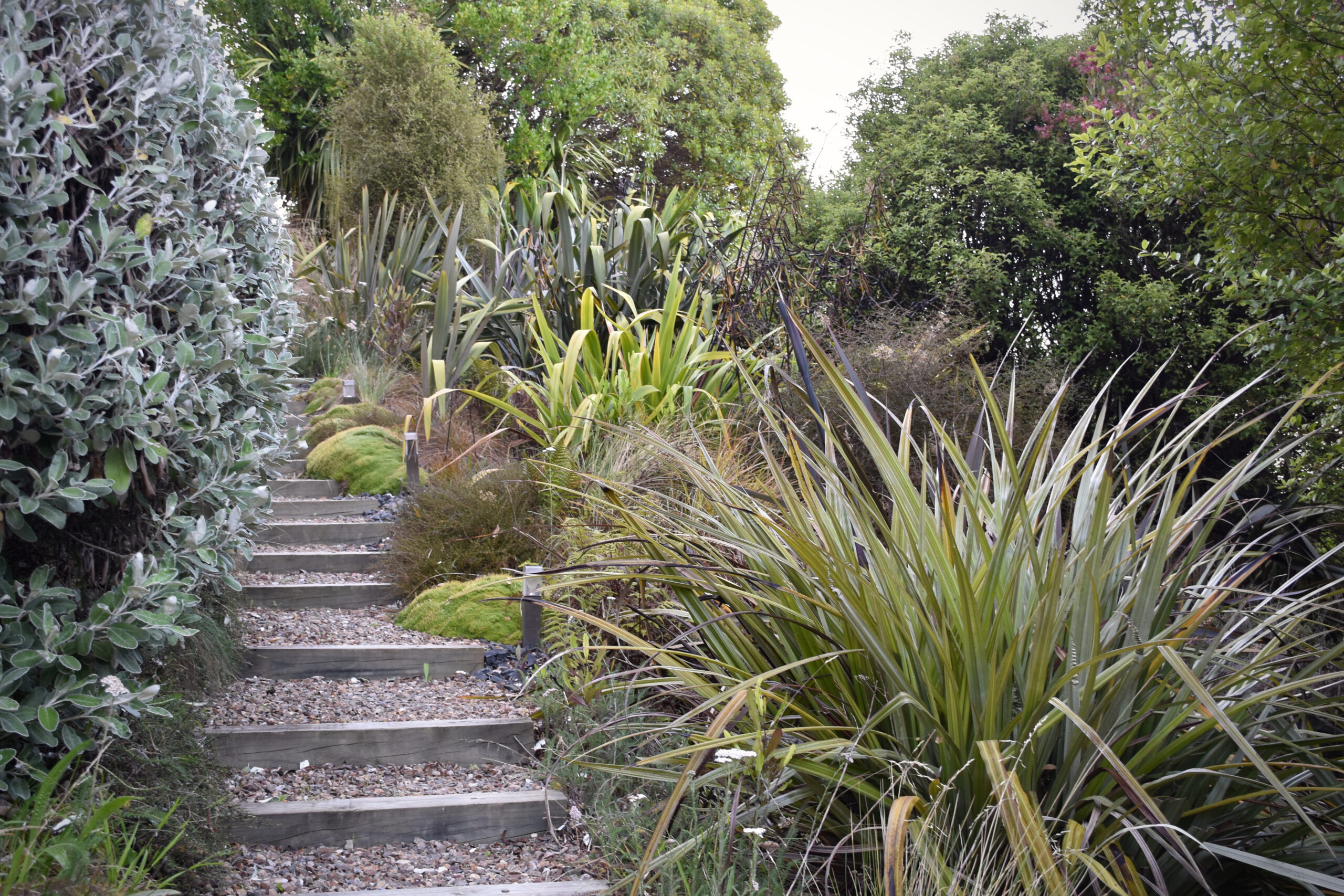

To visit this garden, book a visit at: www.secretgardens.co.nz

